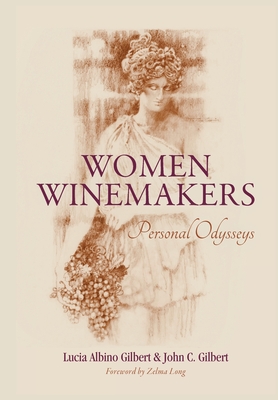Women Winemakers: Personal Odysseys

Women Winemakers: Personal Odysseys
Our goal in writing this book is to make lead women winemakers more visible. We believe that knowing their names, their rich stories, and their varied career pathways helps challenge and change the traditional societal view that women do not have a leading role in producing wine. Women's greater visibility, together with knowledge of their pathways, encourages other women to enter the field with the confidence that they, too, belong and can be successful as winemakers. Their greater visibility also makes women's presence and performance more normative for everyone working in the industry.That said, in many ways this is a highly personal book that portrays details of the professional journeys that women winemakers shared in our one-on-one conversations with them. We have tried our best to capture their stories and journeys. We present their odysseys within a coherent framework built around career pathways and cultural histories and the changing views of women's place in the wine industry.We met with nearly 150 winemakers in California and the wine regions of Champagne, France; Douro Valley, Portugal; Hawke's Bay, New Zealand; Piemonte, Italy; and Pened s, Priorat, and Rioja, Spain to learn about their experiences. We talked exclusively with lead winemakers, that is, winemakers who have the primary responsibility for producing wine at a winery or winemaking facility. These conversations were critical in providing the knowledge base for this book. With a few exceptions, we met with winemakers who are women.The book has three main parts. The three chapters of Part I highlight trailblazing women winemakers. Its first two chapters focus on California's trailblazing women. In chapter 1, we describe the careers of the first eight women who entered the field of winemaking between 1965--the year the first woman, MaryAnn Graf, graduated from an enology program at UC Davis--and 1974, some nine years later. In the next chapter, we introduce the fifteen women who entered the field between 1975 and 1979, just before and after an important blind wine tasting in Paris brought significant attention to California wine. We also describe the career pathways of four women from this period. In chapter 3, we turn to six trailblazing women in the international regions we visited, providing information on the wine region and then describing their careers. Their professional journeys exemplify the four general career pathways to becoming a winemaker.In Part II, we focus on the c
PRP: 185.69 Lei
Acesta este Prețul Recomandat de Producător. Prețul de vânzare al produsului este afișat mai jos.
148.55Lei
148.55Lei
185.69 LeiLivrare in 2-4 saptamani
Descrierea produsului
Our goal in writing this book is to make lead women winemakers more visible. We believe that knowing their names, their rich stories, and their varied career pathways helps challenge and change the traditional societal view that women do not have a leading role in producing wine. Women's greater visibility, together with knowledge of their pathways, encourages other women to enter the field with the confidence that they, too, belong and can be successful as winemakers. Their greater visibility also makes women's presence and performance more normative for everyone working in the industry.That said, in many ways this is a highly personal book that portrays details of the professional journeys that women winemakers shared in our one-on-one conversations with them. We have tried our best to capture their stories and journeys. We present their odysseys within a coherent framework built around career pathways and cultural histories and the changing views of women's place in the wine industry.We met with nearly 150 winemakers in California and the wine regions of Champagne, France; Douro Valley, Portugal; Hawke's Bay, New Zealand; Piemonte, Italy; and Pened s, Priorat, and Rioja, Spain to learn about their experiences. We talked exclusively with lead winemakers, that is, winemakers who have the primary responsibility for producing wine at a winery or winemaking facility. These conversations were critical in providing the knowledge base for this book. With a few exceptions, we met with winemakers who are women.The book has three main parts. The three chapters of Part I highlight trailblazing women winemakers. Its first two chapters focus on California's trailblazing women. In chapter 1, we describe the careers of the first eight women who entered the field of winemaking between 1965--the year the first woman, MaryAnn Graf, graduated from an enology program at UC Davis--and 1974, some nine years later. In the next chapter, we introduce the fifteen women who entered the field between 1975 and 1979, just before and after an important blind wine tasting in Paris brought significant attention to California wine. We also describe the career pathways of four women from this period. In chapter 3, we turn to six trailblazing women in the international regions we visited, providing information on the wine region and then describing their careers. Their professional journeys exemplify the four general career pathways to becoming a winemaker.In Part II, we focus on the c
Detaliile produsului









